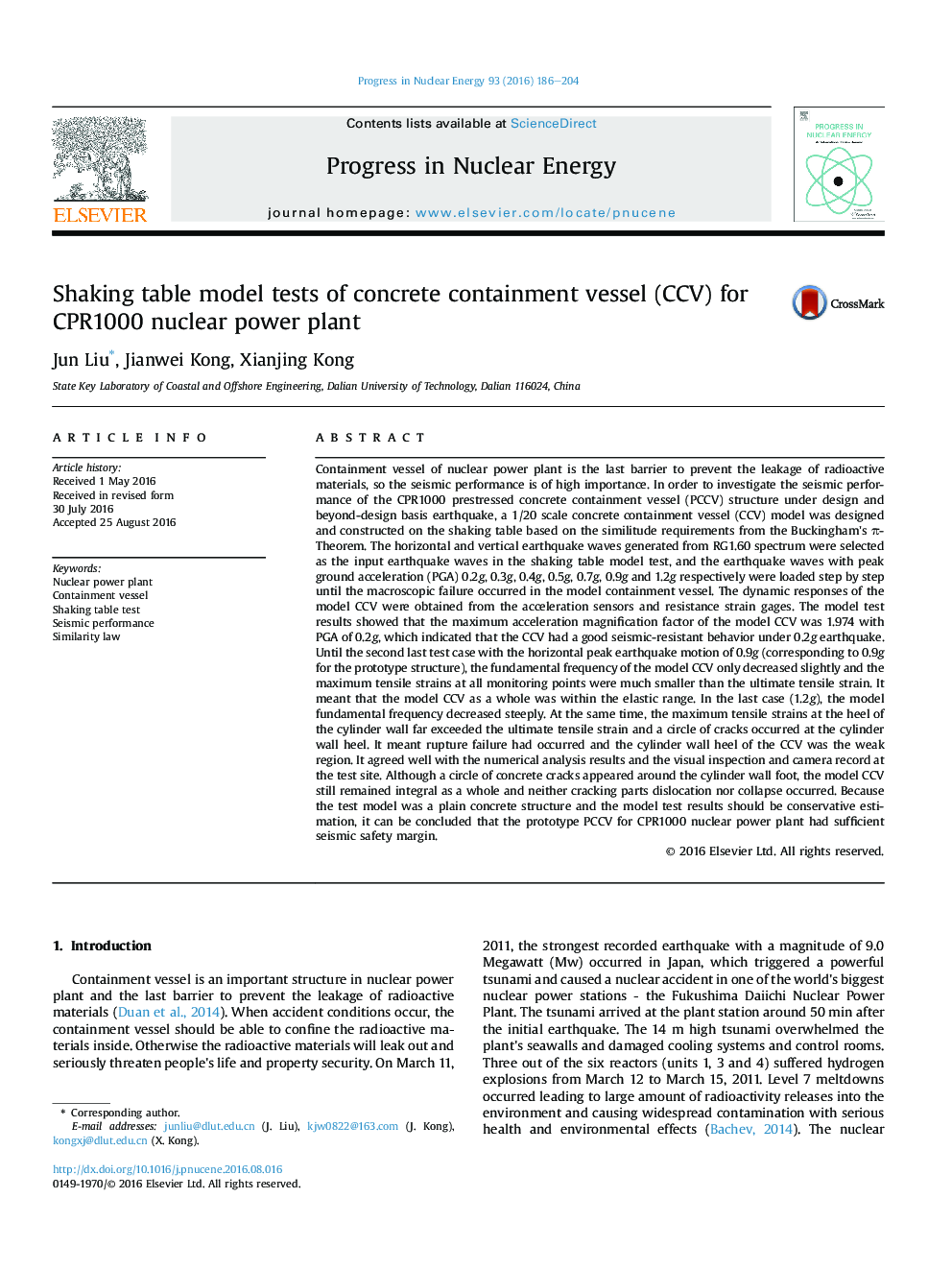| کد مقاله | کد نشریه | سال انتشار | مقاله انگلیسی | نسخه تمام متن |
|---|---|---|---|---|
| 8084734 | 1521745 | 2016 | 19 صفحه PDF | دانلود رایگان |
عنوان انگلیسی مقاله ISI
Shaking table model tests of concrete containment vessel (CCV) for CPR1000 nuclear power plant
دانلود مقاله + سفارش ترجمه
دانلود مقاله ISI انگلیسی
رایگان برای ایرانیان
کلمات کلیدی
موضوعات مرتبط
مهندسی و علوم پایه
مهندسی انرژی
مهندسی انرژی و فناوری های برق
پیش نمایش صفحه اول مقاله

چکیده انگلیسی
Containment vessel of nuclear power plant is the last barrier to prevent the leakage of radioactive materials, so the seismic performance is of high importance. In order to investigate the seismic performance of the CPR1000 prestressed concrete containment vessel (PCCV) structure under design and beyond-design basis earthquake, a 1/20 scale concrete containment vessel (CCV) model was designed and constructed on the shaking table based on the similitude requirements from the Buckingham's Ï-Theorem. The horizontal and vertical earthquake waves generated from RG1.60 spectrum were selected as the input earthquake waves in the shaking table model test, and the earthquake waves with peak ground acceleration (PGA) 0.2g, 0.3g, 0.4g, 0.5g, 0.7g, 0.9g and 1.2g respectively were loaded step by step until the macroscopic failure occurred in the model containment vessel. The dynamic responses of the model CCV were obtained from the acceleration sensors and resistance strain gages. The model test results showed that the maximum acceleration magnification factor of the model CCV was 1.974 with PGA of 0.2g, which indicated that the CCV had a good seismic-resistant behavior under 0.2g earthquake. Until the second last test case with the horizontal peak earthquake motion of 0.9g (corresponding to 0.9g for the prototype structure), the fundamental frequency of the model CCV only decreased slightly and the maximum tensile strains at all monitoring points were much smaller than the ultimate tensile strain. It meant that the model CCV as a whole was within the elastic range. In the last case (1.2g), the model fundamental frequency decreased steeply. At the same time, the maximum tensile strains at the heel of the cylinder wall far exceeded the ultimate tensile strain and a circle of cracks occurred at the cylinder wall heel. It meant rupture failure had occurred and the cylinder wall heel of the CCV was the weak region. It agreed well with the numerical analysis results and the visual inspection and camera record at the test site. Although a circle of concrete cracks appeared around the cylinder wall foot, the model CCV still remained integral as a whole and neither cracking parts dislocation nor collapse occurred. Because the test model was a plain concrete structure and the model test results should be conservative estimation, it can be concluded that the prototype PCCV for CPR1000 nuclear power plant had sufficient seismic safety margin.
ناشر
Database: Elsevier - ScienceDirect (ساینس دایرکت)
Journal: Progress in Nuclear Energy - Volume 93, November 2016, Pages 186-204
Journal: Progress in Nuclear Energy - Volume 93, November 2016, Pages 186-204
نویسندگان
Jun Liu, Jianwei Kong, Xianjing Kong,